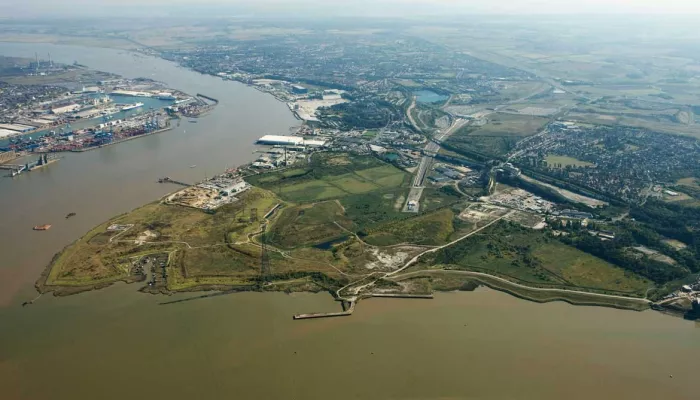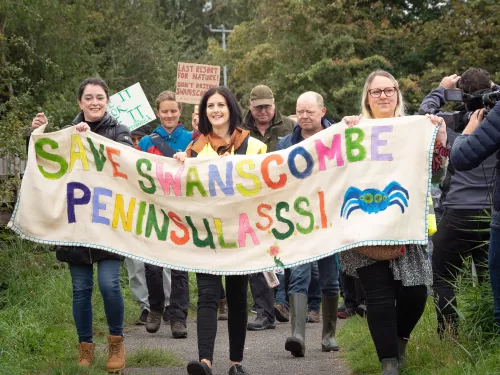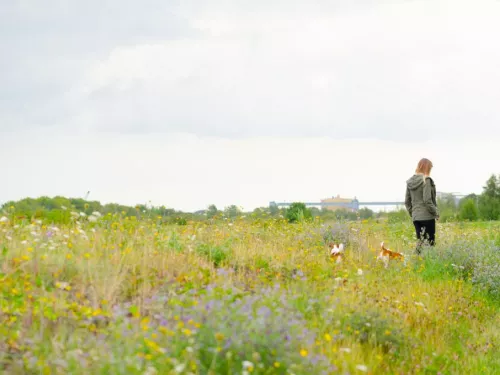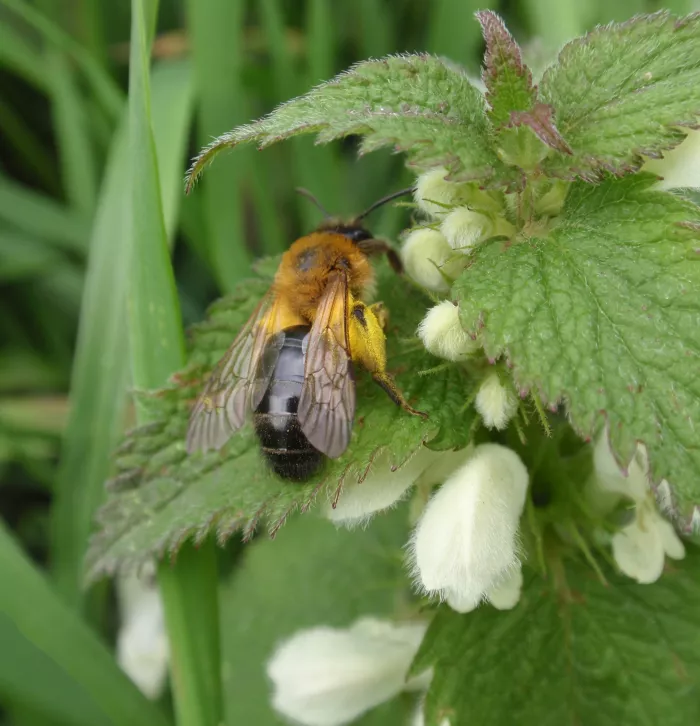Sign the petition now
Save Swanscombe for future generations.

The London Resort is a theme park proposed on 535 acres of land on the Swanscombe Peninsula in north Kent. Home to a remarkable mosaic of habitats, this proposed development poses a threat to wildlife. Find out how you can help
The London Resort is a theme park proposed on 216 hectares of land on the Swanscombe Peninsula in north Kent. Kent Wildlife Trust is opposed to this development.
Home to a remarkable mosaic of grasslands, coastal habitats, brownfield features, scrub and wetlands, this proposed development poses a serious threat to wildlife. The theme park is expected to destroy 76 hectares of priority habitat which forms a vital part of the ecological network of the Thames Estuary. This loss would be equivalent to losing 140 football pitches worth of nationally important habitat!
The importance of the Swanscombe Peninsula for nature was recognised by Natural England in March, when it notified this wildlife haven in North Kent as a SSSI. This means it is an area of particularly high interest for its wildlife and significance for our natural heritage.
Unfortunately, despite this legal protection, the amazing habitats and species found here are still under threat! Help us to Save the Swanscombe Peninsula by signing the petition to put a stop to the destruction of our most precious places for wildlife and people alike!
Save Swanscombe for future generations.
If you live locally, you can use this template to make your voice heard!
We need help with the legal fees, every little helps!

A coalition of charities has welcomed the decision by BBC Studios and ITV Studios to withdraw their support for a proposed theme park in North Kent that would have a devastating impact on a nationally important wildlife site.

Plans to build a theme park on top of 100 hectares of a nationally important wildlife site have been withdrawn at the eleventh hour.

A vision for a nature haven where critically endangered Distinguished Jumping Spiders and rare Man Orchids can flourish has been unveiled by the Save Swanscombe Peninsula community group.
We believe the development will cause significant, permanent damage to nationally and internationally important wildlife and habitats.
During a public consultation which ran until 21 September 2020, we raised serious concerns about this environmental damage. You can read our consultation response here.
Working with other local conservation organisations, we presented a Rationale for the designation of the Swanscombe Peninsula as a Site of Special Scientific Interest. Natural England has recognised the incredible importance of this site by following through with this designation. Read our Rationale here.

We continue to work alongside our partners Buglife, RSPB and CPRE Kent (the countryside charity) to highlight the devastating impact that this application would have, not only on the wildlife and people that depend on it but also to the UKs protected site network.
The historic use of the site has led to a unique mosaic of habitats that supports an incredible diversity of wildlife. The importance of the Swanscombe Peninsula for nature was recognised by Natural England in March, when it notified this wildlife haven in North Kent as a Site of Special Scientific Interest. This means it is an area of particularly high interest for its wildlife and significance for our natural heritage. This legal protection took effect immediately, based on a great number of ecological surveys. The designation recognises the importance of the site for invertebrates, with almost 2000 species of invertebrates found on this site, over 250 of which are rare or threatened.
As well as the sheer diversity of species, Swanscombe Peninsula is one of only two places in the whole of the UK which is home to the critically endangered Distinguished jumping spider (Attulus distinguendus). The Swanscombe Peninsula is of great importance for breeding birds such as nightingale and cuckoo, as well as beautiful flowering plants such as the rare man orchid.
As well as the species which have been identified as having nationally important populations at the Swanscombe Peninsula, the site is also home to many other species such as water vole, otter, bats, dormice and lizards. These species contribute to the flourishing ecosystem, at a time where wildlife populations are in decline.
Due to its saltmarsh and grazing marsh habitats, the Swanscombe Peninsula is part of an essential suite of habitats within the corridor of the River Thames that provide additional habitat for the wintering birds found within internationally important wildlife sites. Disturbance and displacement as a result of increased noise and light pollution, as well as impacts to the water availability and quality, are key concerns for species such as the lapwing.
These habitats, including coastal grazing marsh and open mosaic habitat on previously developed land (wildlife rich brownfield habitat*), are not strictly protected in the UK, but are a key consideration within the planning system. Therefore, we must work on behalf of the wildlife that relies on these habitats to ensure that they are conserved and enhanced.
All of these features make the Swanscombe Peninsula valued not only by nature but by the local community too.
*Click here to learn more about the importance of brownfield sites for invertebrates.
The Swanscombe Peninsula is also part of the Thames-side Green Corridors Biodiversity Opportunity Area which aims to “deliver more, bigger, better and connected habitats as part of a functioning ecological network which supports more resilient and diverse populations of important wildlife.” This essential ecological network within the Thames Estuary is gradually being degraded through development, causing habitat loss and fragmentation. Kent Wildlife Trust is working to ensure that the Swanscombe Peninsula is not another of these losses.
Due to the sensitive location of the main resort and its sprawling footprint, the development has the potential to impact a great number of protected wildlife sites. These sites include the Swanscombe Marine Conservation Zone, designated for its intertidal habitat and being home to the rare tentacle lagoon worm, internationally designated wetland sites which support a rich diversity of birds and Botany Marshes Local Wildlife Site which is designated for its reedbed and grazing marsh habitats which support water vole, otter, birds and reptiles.
